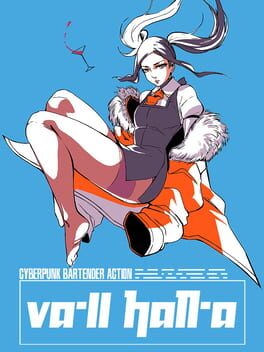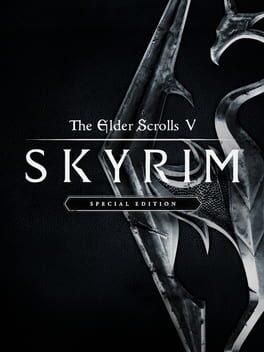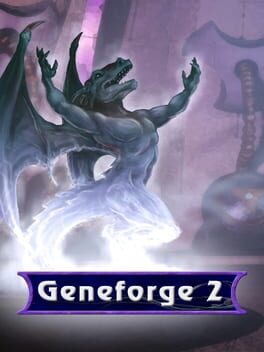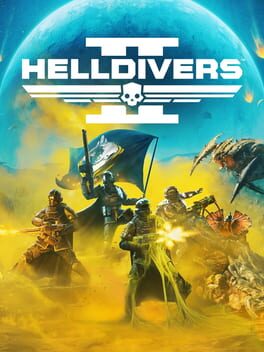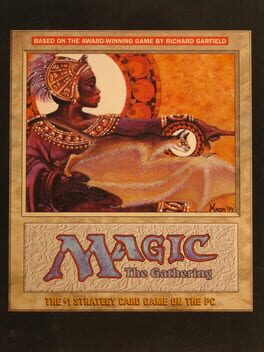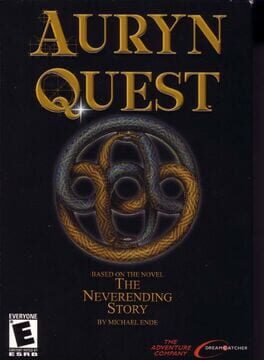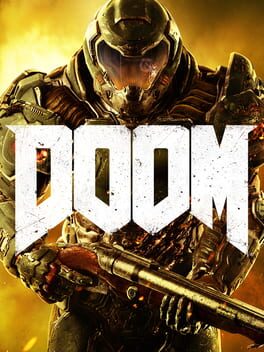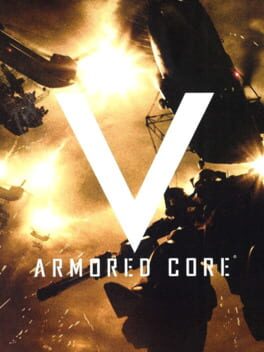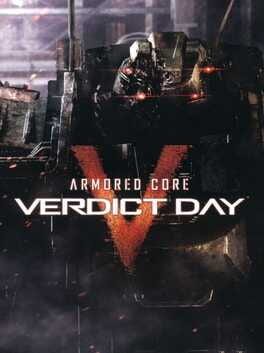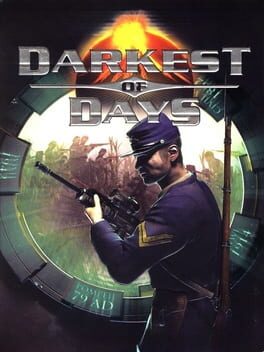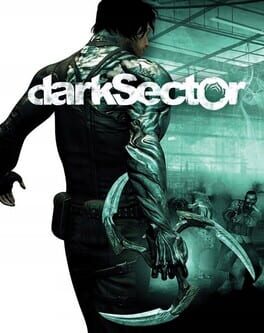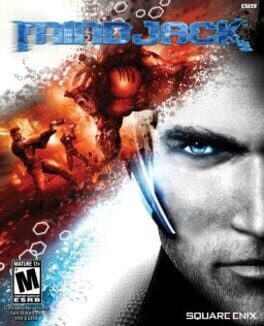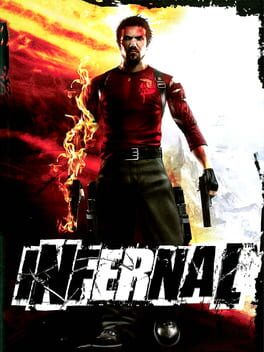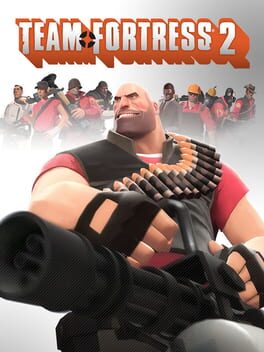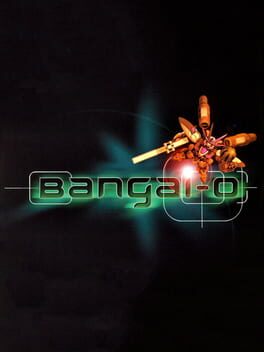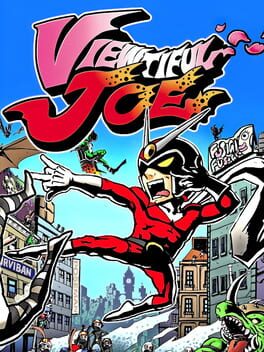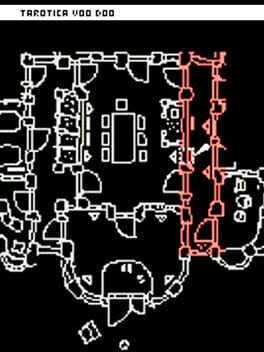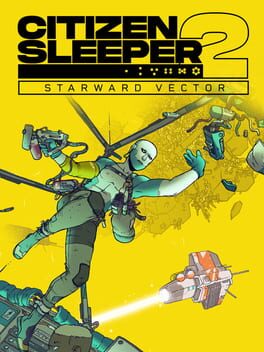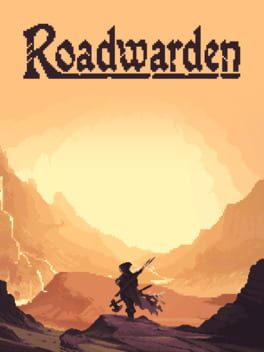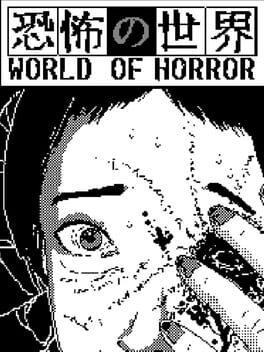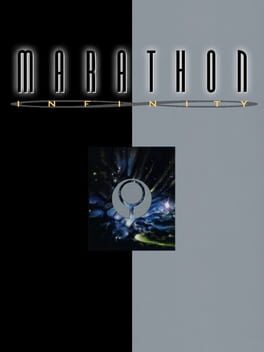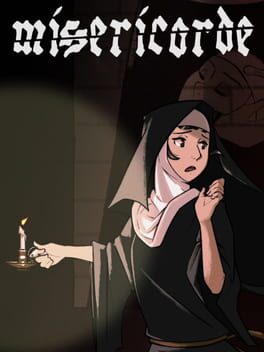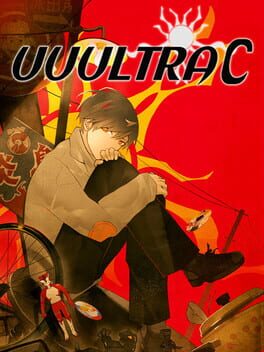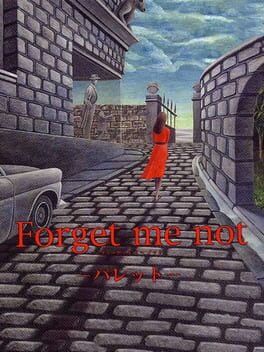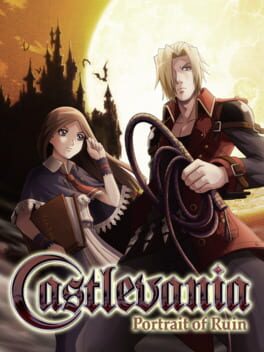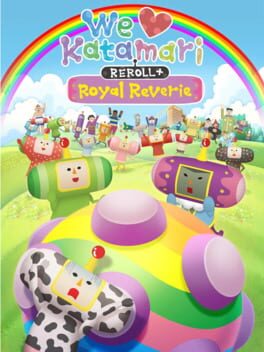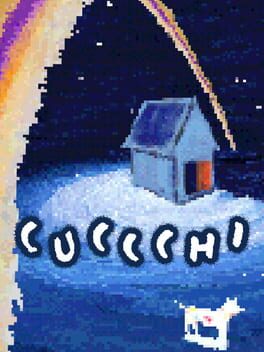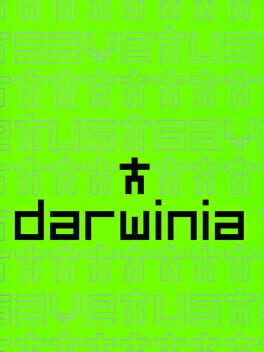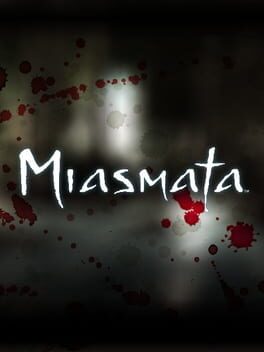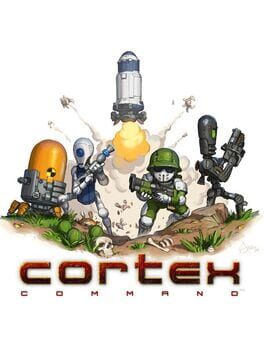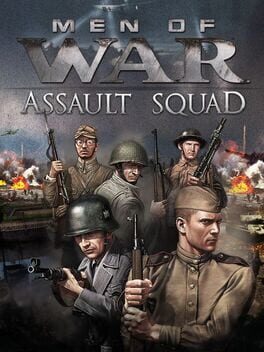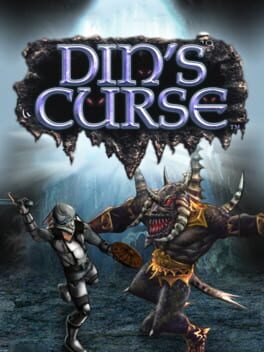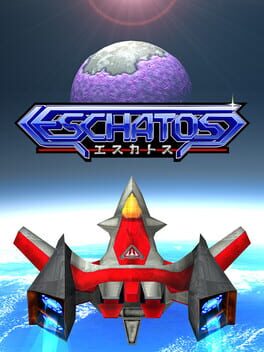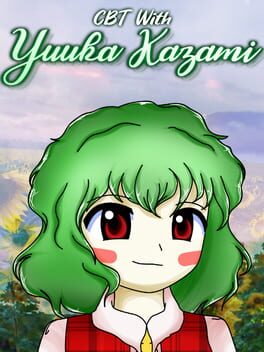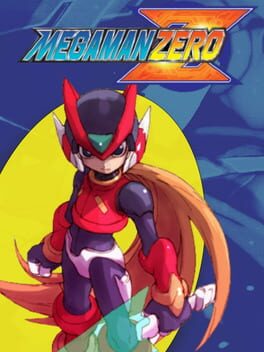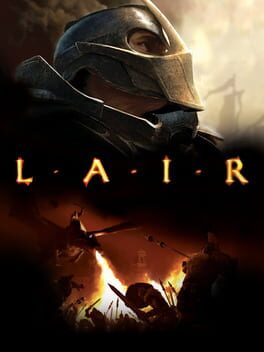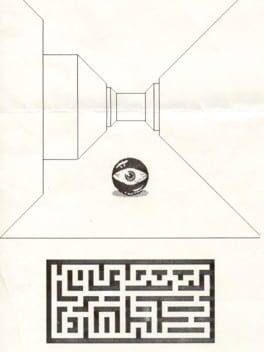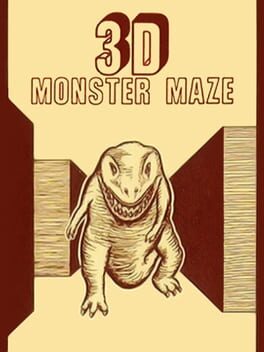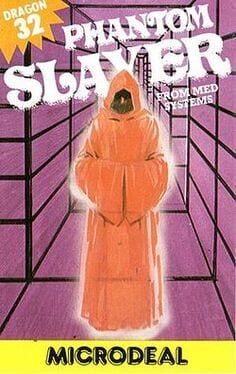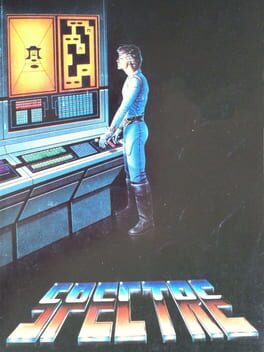1586 reviews liked by SimonDedalus
A game for people who wish 4chan was made for sapphics.
For all that people have lambasted Skyrim for its fundamental flaws, myself included, it is a game that thrives in its smallest moments. After reading Proudlittleseal's lovely review, I decided to give Skyrim a long delayed replay and try to appreciate it on its own terms. I ignored the Skyrim that has aged least well; the series of overly scripted questlines in which the same five voice actors blandly talk over each other about how the Player is the only one that can save the world from Alduin /Eye of Magus/ Stephen Russell. And instead I played the Skyrim that has more in common with the scuffed fantasy paperbacks from charity shops that I used to love for their sincere and uncomplicated adventures. Helping a witch turn on her coven. Having a drinking contest in Ivarstead only to wake to the disapproving glare of a Priestess in Markarth. Investigating a conspiracy only to escape the city with a bounty over a 1000 septims. Assisting a Priest of Mara in leaving his past behind so he can travel by my side. The old hermit who led me to a cavern the size of a small nation. Skyrim thrives in this picaresque framing where every character, dungeon or encounter organically weave into a journey that becomes more than the sum of its parts. In a genre I've come to associate with bloat and busywork, its just refreshing to play a game that cuts all that out and lets me embrace the wanderlust that got me playing rpgs in the first place. Its far from perfect but I see its value now.
Geneforge 2
2003
This review contains spoilers
Geneforge 2 starts with you, an apprentice Shaper, accompanying your master on a fact finding mission to the failing Shaper colony of Drypeak. The initial thrill of adventure is dulled by scenes of industrial decline; abandoned mines and dusty farmsteads overseen by distrusting adminstrators who view your presence as an intrusion. And then you stumble upon a hidden tunnel whose exit causes your world map to quadruple in size, your master is suddenly kidnapped by mysterious assailants and you, an inexperienced apprentice, find yourself entangled in the lethal politics of a vast hidden world.
The above introductory sequence with its bait and switch reveal of the game world and overarching narrative is perhaps the highpoint of Geneforge 2's ambitions to supercede its predecessor whilst also demonstrating its inability to do so. The Drypeak Mountains are a bigger, fantastical game world with more factions than its predecessors and systemically the new creations, spells and abilities provide both variety and balance. Yet for all its additions, 2 is unfortunately subtractive in one key area. Geneforge 1's Sucia Island was a layered, thoughtfully designed space whose many pasts and nuanced inhabitants created a convincing and multifaceted virtual culture. The Drypeak Mountains fare poorly in comparison as although it serves the same function as Sucia Island, the individual inhabitants, towns and locales lack the same attention to detail and depth. Sucia Island felt like a place whilst the Drypeak Mountains felt more like a video game sandbox. This ends up being more significant as in spite of all its additions, 2 still completely adheres to 1's sandbox structure with the exception of its creative introduction. The Drypeak Mountains, stripped of the rich atmosphere and sense of mystery that made exploring Sucia Island so compelling, is simply a less engaging space to inhabit for dozens of hours. More stuff was not enough to overcome a sense that it was in service to an experience that felt inessential.
2 fares better when it operates outside of its need to compare with its predecessor. Whilst 1 demonstrated the iniquity of Shaper authority largely through its negligence and deliberate maladminstration, 2 does so by showing their awful capacity for violence. Just as 1 was a character study of the the world the Serviles built for themselves, 2 thoroughly investigates the consequences of that world's deliberate atomisation. The Shapers' thorough pogrom of Sucia Island have left generational wounds of trauma and perpetual dislocation and have consequently created a consensus among all creations that they will strike before the Shapers get a chance to find them. Though 1 is the first entry, 2's sense of escalation makes it feel like the beginning of the destructive war between Shapers and Creations that defines this series.
It is a more balanced and feature rich game than what came before with unique themes of communal disruption and revolutionary escalation, however its inability to step outside its predecessor's sandbox structure to better relay its sense of escalation makes it a less considered game overall.
The above introductory sequence with its bait and switch reveal of the game world and overarching narrative is perhaps the highpoint of Geneforge 2's ambitions to supercede its predecessor whilst also demonstrating its inability to do so. The Drypeak Mountains are a bigger, fantastical game world with more factions than its predecessors and systemically the new creations, spells and abilities provide both variety and balance. Yet for all its additions, 2 is unfortunately subtractive in one key area. Geneforge 1's Sucia Island was a layered, thoughtfully designed space whose many pasts and nuanced inhabitants created a convincing and multifaceted virtual culture. The Drypeak Mountains fare poorly in comparison as although it serves the same function as Sucia Island, the individual inhabitants, towns and locales lack the same attention to detail and depth. Sucia Island felt like a place whilst the Drypeak Mountains felt more like a video game sandbox. This ends up being more significant as in spite of all its additions, 2 still completely adheres to 1's sandbox structure with the exception of its creative introduction. The Drypeak Mountains, stripped of the rich atmosphere and sense of mystery that made exploring Sucia Island so compelling, is simply a less engaging space to inhabit for dozens of hours. More stuff was not enough to overcome a sense that it was in service to an experience that felt inessential.
2 fares better when it operates outside of its need to compare with its predecessor. Whilst 1 demonstrated the iniquity of Shaper authority largely through its negligence and deliberate maladminstration, 2 does so by showing their awful capacity for violence. Just as 1 was a character study of the the world the Serviles built for themselves, 2 thoroughly investigates the consequences of that world's deliberate atomisation. The Shapers' thorough pogrom of Sucia Island have left generational wounds of trauma and perpetual dislocation and have consequently created a consensus among all creations that they will strike before the Shapers get a chance to find them. Though 1 is the first entry, 2's sense of escalation makes it feel like the beginning of the destructive war between Shapers and Creations that defines this series.
It is a more balanced and feature rich game than what came before with unique themes of communal disruption and revolutionary escalation, however its inability to step outside its predecessor's sandbox structure to better relay its sense of escalation makes it a less considered game overall.
Helldivers 2
2024
3D shooters are a genre long and particularly afflicted with 'just so' game design; Half-Life popularized a reload mechanic where you tap a button and wait to have your gun refilled from a pool, and this became a defacto standard for no particular reason over not having reloading, or reloading that actually has gun magazine management, or dozens of other one off systems meant to represent a games ethos. Halo introduced a two-weapon system that, along side a nuanced weapon selection forced you to always accept a trade off, games without nuanced weapon selections copied it wholesale, usually resulting in defacto one weapon system because you really need to carry the M16 at all times to get anything done. Halo Infinite in turn has a sprint button with so little effect that you need a stopwatch to tell if it makes you faster- because Halo doesn't benefit from a sprint mechanic but Shooters Have Sprint. Helldivers is perhaps the only studio published 3D shooter in half a decade if not more where there is no 'just so' game design, from meat and potato mechanics like your gun's recoil being semi-deterministic to help you avoid the regular concern of friendly fire, and your gun being loaded from a small pool of disposable magazines, to fun details like running out of spawns but completing the mission objective still constituting a victory.
Dragon's Dogma II
2024
In one of its previews, Hideaki Itsuno was deliberately evasive when asked about why Dragon’s Dogma II’s title screen initially lacks the II, saying only “nothing in this game is unintentional.” You can draw whatever conclusion you like from that, but I think I’ve a different interpretation from most – it’s less a signal that this is a reimagining or a remake or whatever else in disguise than a display of confidence in how well he and his team understand what makes it tick.
As much as I’ll never wrap my head around how they got the first Dragon’s Dogma running on 7th gen hardware (albeit just about), I would’ve said it was impossible not to feel how much more II has going on under the hood in even the briefest, most hasty of encounters if it weren’t being so undersold in this respect. While my favourite addition is that enemies’ individual body parts can now be dragged or shoved to throw them off balance, tying into both this new world’s more angular design and how they can be stunned by banging their head off of its geometry, yours might be something else entirely with how many other new toys there are to play with. One particularly big one’s that you and your pawns can retain access to your standard movesets while clinging to larger enemies if you manage to mantle onto them from the appropriate angle, but you’ve gotta watch out for the newly implemented ragdoll physics while doing so, since the damage received from getting bucked off now varies wildly depending on your position at the time and the nearby environment as a result of them. Successive strikes create new avenues of offence akin to Nioh’s grapples, pressuring you to get as much damage in as you can before letting one loose and taking your target out of its disadvantage state, while also enabling you to keep them in a loop if you’re able to manipulate their stun values well enough. Layers of interaction just keep unravelling further as you play – controlling the arc you throw enemies or objects in, tackling smaller enemies by grabbing them mid-air, corpses or unconscious bodies of bosses now being tangible things you can stand on top of instead of ethereal loot pinatas… I would’ve taken any one of these in isolation. To have them all, plus more, every one being wholly complementary and faithful to the scrambly, dynamic, improvisational core of Dragon’s Dogma’s combat? It’s i n s a n e to me that someone can undergo even a confused few minutes of exposure to any of this and reduce it to “more of the first” or what have you.
Your means of approaching enemies or general scenarios which return from the first game’re further changed by II’s more specialised vocations. Having spent most of my time with Warrior in both titles, I love what’s been done with it in particular. They’ve taken the concept of timing certain skills and applied it to almost every move, anything from your standard swings to its final unlockable skill becoming faster and faster as you time successive inputs correctly – this is only the slow, basic version of the latter and I still feel bad for whatever I batter with it – with chargeable skills now also doubling as a parry for attacks they collide with, similar to DMC5’s clashing mechanic. It’s emblematic of the devs’ approach to vocations in general; Archer’s relatively lacking melee options and litany of flippy, full-on Legolas nonsense encourages keepaway where its four predecessors were all slightly differing flavours of “does everything”, Thief trades access to assault rifle-like bows and invites stubbiness for being able to navigate this world’s much rockier terrain like it’s a platformer, Fighter no longer has to waste skill slots to hit anything slightly above your head and has more versatile means of defence in exchange for melee combat being more punishing in general, etc. It’s to the extent that choosing between any two vocations feels like I’m switching genres, man. In a landscape where people are demonstrably content with having no means of interacting with big monsters other than smacking their ankles, how is even a pretty simple interaction like this not supposed to feel like a game from the future?
On simple interactions, much of this would be lessened if it weren’t for the loss gauge in tandem with the camping system and how these accentuate the sense of adventure which the first game built. The persistent thoughts of “how do I get there?” are retained, but only being able to fully recuperate your health via downtime with the lads and/or ladesses fills every step of the way toward the answer with that much more trepidation, bolstered further by the aforementioned verticality and on the more presentational side of things by how your pawns actually talk to each other now. It leads to some very memorable, emergent experiences which are personal purely to you – one I’m especially fond of involved resting after killing a drake, having my camp ambushed in the middle of the night by knackers who were too high up for me to exercise my k-word pass and having to trek all the way back to Bakbattahl with barely a third of my maximum health as my party continually chattered about how freaky the dark is. I take back the suggestion I made regarding potential changes to the healing system in my review of the first game, because even superfans (or, maybe, especially superfans) can, and do, think too small.
I realise in retrospect that even I, on some level, was wanting certain aspects of Dragon’s Dogma to be like other games instead of taking it on its own merits, something II’s seemingly suffered from all the more with how much gaming has grown since the original’s release, the average player’s tolerance for anything deviating from the norm and, presumably, frame of reference growing ever smaller. Look no further than broad reactions to dragonsplague and its effects (which I won’t spoil) being only the second or third most embarrassing instance of misinformed kneejerk hostility disguised as principled scepticism which enveloped this game’s release to the point you’d swear Todd Howard was attached to it – we want consequences that matter, but not like that! Even if you aren’t onboard with this being the coolest, ballsiest thing an RPG has bothered and will bother to do since before I was born, how can you not at least get a kick out of starting up your own homegrown Dragonsplague Removal Service? You thought you could escape the great spring cleaning, Thomyris, you silly billy? I’m oblivious like you wouldn’t believe, had her wearing an ornate sallet by the time she’d first contracted it and still noticed her glowing red eyes every time, so I’m at a loss as to how it could blindside anybody. It vaguely reminds me of modern reactions to various aspects of the original Fallout; a game which you can reasonably beat in the span of an afternoon, designed to be played with a single hand, somehow commonly seen as unintuitive because it just is, okay? Abandon all delusions of levelheadedness: if a Fallout game with a timer were to release now, the world’s collective sharting would result in something similar to that universe’s Great War or, indeed, Dragon’s Dogma II’s own post-game.
For as many hours as I’ve poured into the Everfall and Bitterblack across two copies of the original, they’re not what I think of when I think of Dragon’s Dogma (or particularly interesting, in the former’s case), which is adventuring in its open world. In that regard, I can’t be convinced that II’s post-game isn’t far more substantial, comparatively rife with monsters either unique or which you’re very unlikely to encounter prior to it, changes to the world’s layout beyond a hole in the ground of one city, its own mechanics (one actually a bit reminiscent of Fallout’s timer), questlines and even setpieces. It’s got a kaiju fight between a Ray Harryhausen love letter and a demonic worm thing which, as of the time of writing, roughly 2% of players have discovered, and instead of being praised for the sheer restraint it must’ve taken to keep something like that so out of the way, it’s chastised for it?
I’m not sure any other game’s ever made me realise how divorced what I want out of games seems to be from the wider populace. So much of this is 1:1 aligned with my tastes that the only thing that feels potentially missing’s the relative lack of electric guitars, but even then I’d be a liar if I told you that Misshapen Eye, the dullahan’s theme, the griffin’s new track, the post-game’s somber piano keys or the true ending’s credits song among others haven’t gotten stuck in my head at some stage anyway or didn’t perfectly complement the action through dynamically changing. It manages this despite clearly not caring about what you or I or anyone else thinks or wants from it. It’s developed a will and conviction all of its own. It’s Dragon’s Dogma, too.
As much as I’ll never wrap my head around how they got the first Dragon’s Dogma running on 7th gen hardware (albeit just about), I would’ve said it was impossible not to feel how much more II has going on under the hood in even the briefest, most hasty of encounters if it weren’t being so undersold in this respect. While my favourite addition is that enemies’ individual body parts can now be dragged or shoved to throw them off balance, tying into both this new world’s more angular design and how they can be stunned by banging their head off of its geometry, yours might be something else entirely with how many other new toys there are to play with. One particularly big one’s that you and your pawns can retain access to your standard movesets while clinging to larger enemies if you manage to mantle onto them from the appropriate angle, but you’ve gotta watch out for the newly implemented ragdoll physics while doing so, since the damage received from getting bucked off now varies wildly depending on your position at the time and the nearby environment as a result of them. Successive strikes create new avenues of offence akin to Nioh’s grapples, pressuring you to get as much damage in as you can before letting one loose and taking your target out of its disadvantage state, while also enabling you to keep them in a loop if you’re able to manipulate their stun values well enough. Layers of interaction just keep unravelling further as you play – controlling the arc you throw enemies or objects in, tackling smaller enemies by grabbing them mid-air, corpses or unconscious bodies of bosses now being tangible things you can stand on top of instead of ethereal loot pinatas… I would’ve taken any one of these in isolation. To have them all, plus more, every one being wholly complementary and faithful to the scrambly, dynamic, improvisational core of Dragon’s Dogma’s combat? It’s i n s a n e to me that someone can undergo even a confused few minutes of exposure to any of this and reduce it to “more of the first” or what have you.
Your means of approaching enemies or general scenarios which return from the first game’re further changed by II’s more specialised vocations. Having spent most of my time with Warrior in both titles, I love what’s been done with it in particular. They’ve taken the concept of timing certain skills and applied it to almost every move, anything from your standard swings to its final unlockable skill becoming faster and faster as you time successive inputs correctly – this is only the slow, basic version of the latter and I still feel bad for whatever I batter with it – with chargeable skills now also doubling as a parry for attacks they collide with, similar to DMC5’s clashing mechanic. It’s emblematic of the devs’ approach to vocations in general; Archer’s relatively lacking melee options and litany of flippy, full-on Legolas nonsense encourages keepaway where its four predecessors were all slightly differing flavours of “does everything”, Thief trades access to assault rifle-like bows and invites stubbiness for being able to navigate this world’s much rockier terrain like it’s a platformer, Fighter no longer has to waste skill slots to hit anything slightly above your head and has more versatile means of defence in exchange for melee combat being more punishing in general, etc. It’s to the extent that choosing between any two vocations feels like I’m switching genres, man. In a landscape where people are demonstrably content with having no means of interacting with big monsters other than smacking their ankles, how is even a pretty simple interaction like this not supposed to feel like a game from the future?
On simple interactions, much of this would be lessened if it weren’t for the loss gauge in tandem with the camping system and how these accentuate the sense of adventure which the first game built. The persistent thoughts of “how do I get there?” are retained, but only being able to fully recuperate your health via downtime with the lads and/or ladesses fills every step of the way toward the answer with that much more trepidation, bolstered further by the aforementioned verticality and on the more presentational side of things by how your pawns actually talk to each other now. It leads to some very memorable, emergent experiences which are personal purely to you – one I’m especially fond of involved resting after killing a drake, having my camp ambushed in the middle of the night by knackers who were too high up for me to exercise my k-word pass and having to trek all the way back to Bakbattahl with barely a third of my maximum health as my party continually chattered about how freaky the dark is. I take back the suggestion I made regarding potential changes to the healing system in my review of the first game, because even superfans (or, maybe, especially superfans) can, and do, think too small.
I realise in retrospect that even I, on some level, was wanting certain aspects of Dragon’s Dogma to be like other games instead of taking it on its own merits, something II’s seemingly suffered from all the more with how much gaming has grown since the original’s release, the average player’s tolerance for anything deviating from the norm and, presumably, frame of reference growing ever smaller. Look no further than broad reactions to dragonsplague and its effects (which I won’t spoil) being only the second or third most embarrassing instance of misinformed kneejerk hostility disguised as principled scepticism which enveloped this game’s release to the point you’d swear Todd Howard was attached to it – we want consequences that matter, but not like that! Even if you aren’t onboard with this being the coolest, ballsiest thing an RPG has bothered and will bother to do since before I was born, how can you not at least get a kick out of starting up your own homegrown Dragonsplague Removal Service? You thought you could escape the great spring cleaning, Thomyris, you silly billy? I’m oblivious like you wouldn’t believe, had her wearing an ornate sallet by the time she’d first contracted it and still noticed her glowing red eyes every time, so I’m at a loss as to how it could blindside anybody. It vaguely reminds me of modern reactions to various aspects of the original Fallout; a game which you can reasonably beat in the span of an afternoon, designed to be played with a single hand, somehow commonly seen as unintuitive because it just is, okay? Abandon all delusions of levelheadedness: if a Fallout game with a timer were to release now, the world’s collective sharting would result in something similar to that universe’s Great War or, indeed, Dragon’s Dogma II’s own post-game.
For as many hours as I’ve poured into the Everfall and Bitterblack across two copies of the original, they’re not what I think of when I think of Dragon’s Dogma (or particularly interesting, in the former’s case), which is adventuring in its open world. In that regard, I can’t be convinced that II’s post-game isn’t far more substantial, comparatively rife with monsters either unique or which you’re very unlikely to encounter prior to it, changes to the world’s layout beyond a hole in the ground of one city, its own mechanics (one actually a bit reminiscent of Fallout’s timer), questlines and even setpieces. It’s got a kaiju fight between a Ray Harryhausen love letter and a demonic worm thing which, as of the time of writing, roughly 2% of players have discovered, and instead of being praised for the sheer restraint it must’ve taken to keep something like that so out of the way, it’s chastised for it?
I’m not sure any other game’s ever made me realise how divorced what I want out of games seems to be from the wider populace. So much of this is 1:1 aligned with my tastes that the only thing that feels potentially missing’s the relative lack of electric guitars, but even then I’d be a liar if I told you that Misshapen Eye, the dullahan’s theme, the griffin’s new track, the post-game’s somber piano keys or the true ending’s credits song among others haven’t gotten stuck in my head at some stage anyway or didn’t perfectly complement the action through dynamically changing. It manages this despite clearly not caring about what you or I or anyone else thinks or wants from it. It’s developed a will and conviction all of its own. It’s Dragon’s Dogma, too.
Magic: The Gathering
1997
shandalar is good when you ain’t got a bitch in your ear telling you that it’s a primitive way to play the game
Auryn Quest
2002
cute first-person platformer, made out of cancelled Neverending Story adventure game. nonsense dreamy levels+characters, pittance of story, bland collectathon gameplay, obvious exploits, 2 hours long. crosses my mind multiple times a week. must-play.
Dusk
2018
third time giving this a shot. was not the charm. for all the comparisons people made to quake when hyping it up, it fails to do ANYTHING that made quake good. movement is Amiga level bad, weapons are lame (so much hitscan...), music is filler, levels are Alright at best, except for the part where every single one of them has a rape joke hidden in it so you can unlock a rape joke steam achievement. had this actually come out in the 90s it would be relegated to the same bins as SiN and Gunman Chronicles; the idea anyone likes it more than Doom is, genuinely, driving me to drink as i type.
there's a reason the multiplayer is deader than Daikatana's.
there's a reason the multiplayer is deader than Daikatana's.
Doom
2016
almost a good game, held back by memes and insecurity
doom (1993) is a game entirely focused on level design. you are 'exploring the level' at all times. combat encounters are part of the exploration. weapon pickups are part of the exploration. secret hunting is part of the exploration. every single action you take, sans the minutiae of combat (projectile dodging, bfg trickery, etc), is you engaging with the design of the level. you can beat every map in the game launched directly, with just the starting pistol and health. this is not an accident. levels are not scenes in a movie, or episodes in a show, but songs in an album. in this sense it (and doom 2, and quake) is much like an early mario, or sonic, or dungeon crawler. that hint of dungeon crawl is extremely important to doom; many spaces are designed to mess with you. you need to master the spaces to even finish the level. they're called "maps" for a reason!
doom 2016 is a game about systems. encounter design, weapon pickups, and secret hunting are all constrained based on how they want you to engage with the combat and progression systems. levels get cleaved into two modes: "looking around for stuff to unlock" and "boxed off combat." let me explain.
this game is structured around upgrades. in order to fully kit out doomslayer, you need to find all of the:
-weapons
-points to unlock weapon mods (hot-swappable altfire modes, two per weapon)
-points to upgrade weapon mods (2-3 per weapon mod)
-"mastery" upgrades for fully upgraded weapon mods
-points to upgrade the praetor suit
-second type of points for second type of praetor suit upgrade
-runes (think CoD perk system, or old LoL runepages), unlocked for doing specific instanced challenges
-slots for runes, unlocked for doing an amount of instanced challenges
-"mastery" upgrades for runes
that's nine different types of unlock. nine. for reference, the only one of these systems in the original games is "finding the weapons."
these upgrades aren't tiny, either. there's no Path of Exile "+1.3% Shock damage to Undead type enemies (Melee only)" here. instead you're unlocking things like "weapon switch speed." "immunity to explosive barrels." "bullet penetration." "reload speed for your altfire." "maximum health." these aren't minor things, they are the fundamentals of the actual combat system, the sort of thing you argue about in a competitive game. and because the game is entirely focused on its combat system, this means you only get to start playing The Actual Game - juggling weapons with the actual swap speed, using the various types of weapon mod, being able to double-jump with proper air control, or do glory kills from full range - once you find the right number of these upgrades. it's maddening.
note i am saying "find." not "get," but "find." because, yes, the obsession with upgrade systems infected the secrets too. the upgrades , or the challenges you have to do to get the upgrades, are scattered around the levels in random dead ends, or vents, at the end of "platforming" segments, or occasionally in actually optional chunks of level. you are often given three paths, two which lead to objectives (sometimes the same objective) and one slightly hidden one which leads you to the body of an Elite Guard with a Praetor Token, or an Argent Cell, or a portal to a Rune Trial, or one of 48 collectible Funko Pops, or some other nonsense. i think this is done to make secrets "Feel Rewarding," compared to the original Doom, where you'd usually just be given full health and armor, or maybe a temporary powerup. but really, it does the opposite. you have to find secrets, or else you are going to be behind on upgrades, and the secrets can't be too secret or else people won't be able to find them. the automap marks them on the map screen before you even find them, because they know you are going to need them. so, you are not engaging with the design of the level. there is no feeling of solving a puzzle, or "getting the joke," or just finding something interesting. you are just checking things off a list in the corner of the map screen.
i can imagine some rebuttals to this. "you can just not get the upgrade points," etc. sure. they can also "just" not make me unlock half of the mechanics in the game. this is one of the oldest complaints about Devil May Cry (a game these designers are clearly enamored with), or God of War, or any other Action-First Action Game w/ this sort of system - "the game doesn't start until you unlock a bunch of moves," "why can't you just start with Enemy Step," etc. I am not really fond of DMC in the first place, but it does eventually become a very good game once you get over that hump. i do not understand why idsoft decided to triple down on this, instead. and either way, these "you control the buttons you press" type responses ignore the actual incentives set by the progression systems, which the designers were clearly quite excited about having come up with, what with it dictating every part of the game. nobody would make a complaint like this if they hadn't built the game in this way!
anyways, while you're scrounging for upgrade points, you will eventually find yourself in a Combat Zone. these are (either functionally or actually) boxed off areas where enemies spawn, repeatedly, for a certain amount of time, much like DMC, or Serious Sam, or Painkiller, or other games I don't really enjoy specifically because of this "boxes connected by hallways" format. but at least the actual combat you do in here is pretty good. ultraviolence difficulty forces you to do a lot of weapon swapping, a la Quake 3 rocket/clan arena mode, with the positioning dances of Quake 1 or a Halo. the glory kill system is cool and gives fights a nice ebb and flow. it's pretty fun! at least, once you unlock the fun version of the game, where you're able to do the weapon swapping and do glory kills from full range and take more than 150 damage before dying and and and...
actually, no, let's talk about the combat. it's the only thing this game has going for it, so i have to give it more than two sentences. i want to compare it, again, to doom 93, because its the only way to explain the differences between the two.
the combat in the original doom is extremely similar to arcade scrolling shooters - gradius, xevious, eXceed 3rd Jade Penetrate Black Package, etc etc. you can strafe, you can fire hitscan weapons, you can fire projectile weapons, you can fire slower projectile weapons that explode on impact. some enemies shoot hitscan, others shoot projectiles, others do melee stuff. the game mostly boils down to dodging projectiles, circle strafing, and occasional cover peeking. this is not a problem. it's simple, it's fun to handle, and given good level and encounter design, it can be incredibly fun and interesting. your ammo economy decisions happen across the entire level: "i won't use this weapon in this fight because i want to have ammo for it in the next fight, which has these enemies," etc. this is, again, a strategic decision that can be fun, or interesting, or stressful, or whathaveyou, in the hands of the right designer. in this way, Doom is closer to an older dungeon crawler than a modern first-person shooter. remember that the original inspiration for the id FPS games was Carmack seeing a demo of Ultima Underworld at a trade show, and going "I could do that, but faster!" Ultima Underworld is a very slow, simulationist game about having to survive in a locked dungeon. It was a direct response to Dungeon Master, which itself was a real-time, semi-simulationist take on the Wizardry/Bard's Tale/Might&Magic style of first-person party-based grid-movement dungeon crawler (if you've played Legend of Grimrock, you've basically played Dungeon Master). With this info, we can start to understand these early id games as a type of dungeon crawler. The first of the "real" FPS games they made, Catacomb 3D (Hovertank is a tech demo shut up), lifted heavily from Gauntlet, an early arcade Action RPG. Wolf3D is faster, more refined Catacomb. Doom is faster, more refined Wolf3D. Quake is... etc. This is why the level design is like that. This is why the item economy is like that, why Wolf3D had "meaningless" rooms where you pick up treasure, why you were meant to get lost. Even the "bumping into walls trying to find the last secret in the map" bullshit is lifted directly from Wizardry.
unfortunately, while making their weird arcade-action dungeon crawler, they also decided to give it a gory, hypermasculine speed metal aesthetic to complement its Blazing Fast Graphics. this opened them up to controversy, reinterpretation, and controversy-fueled reinterpretation. Doom, a game where you stumble your way through weird pitch black corridors filled with nonsense monsters, became something you played to prove you were a Real, Hardened Man of a 17 year old. (yes, it always had the chainsaw, the rampage powerup, the gore sprites - i've played it dozens of times, I know). this feedback loop brings us to the doom comic.
in 1996, which I want to remind you was four years after doom came out, Marvel released a one-off Doom promotional comic. it cold opens with Doomguy punching a bunch of demons while dropping bad one-liners. "I'm a 12.0 on the 10.0 scale of badness!" "Knock knock, who's there? ME!" etc. on page 3, Methguy finds himself a cyberdemon. he exclaims, "You are huge! That means you have huge guts! Rip and tear! Rip and tear your guts!" And then he, well, who cares. Nobody cared at the time, at least. Only a few more people cared after Lowtax (eugh) dug it up for a Planetquake article 5 years later. But eventually, through the power of memetics, the phrase "Rip And Tear Your Guts," a dumb one-liner from a comic nobody had ever read, became the soul of Doom, to a certain kind of person. When the mod "Brutal Doom" came out in 2010, and added fancier gore, headshot mechanics, Mortal Kombat fatalities, and a bunch of other superfluous dumb shit, that impression of Doom went well beyond the Doomworld shitposters and landed straight in people's Youtube recommendations. That, I'm fairly sure, is how Doom 2016 ended up more inspired by a line from an ad than the actual game it's actually meant to "reboot."
The opening cutscene of 2016 ends with the line "rip and tear until it is done." The glory kill, the game's Clever Mechanic, is a "rip and tear" button. That's not to say it's not fun. Being able to turn enemies into health is cool, and keeps the game from feeling as bland as other "boxes in a row" shooters. But it serves that meme revisionism just as much as it serves the game design. This game is not in conversation with Doom. It is not building on what id was doing with Doom. It does not "bring Doom forward to a new generation." It is an adaptation of one single panel from a shitty advertisement comic book the creators had no hand in, by way of mechanics from "Character Action" games and the worst Eurotrash shooters of the mid 2000s. This frustrated me in 2016, and it frustrates me now, years after the initial disappointment wore off.
so. the level design sucks. the cutscenes suck. (have i mentioned this game has unskippable cutscenes? they're bad!). the sections where you have to stand around and listen to someone tell you that someone is trying to access someone's secret files through the Vega terminus in the ruins of the Archon reprocessor core or whatever before you can start playing the level, suck. they even do that Whedon thing where the protagonist, in world, gets mad that someone would have the gall to make him sit through an exposition dump in a Doom game, in the first five minutes of the game, and then they keep fucking doing it! the platforming, something they stuck in here even having eighteen years to take a semicritical look at Half-Life, also kinda sucks, until halfway thru the game when you find the challenge to unlock tier 1 of the perk that gives you vaguely Quake air-control instead of Halo floatiness. really, every part of the game, outside the boxes where you're doing combat, is either bland, or annoying, or Actively Bad. and the combat's only good once you've spent a few hours dealing with the upgrade system, which also sucks. the most fun I've had is cranking the difficulty in arcade mode, which lets you skip most of that fluff. not all, just most. i dunno, man!
I am sure the people who were peeing their pants over this game in 2016 were doing so sincerely. but i find myself wondering how many of them had played the original game, or how long it had been since they'd done so, and what they would say they liked about it if asked, because absolutely none of what's kept that game fun, interesting good for thirty years is present here. just download some mods for that instead.
doom (1993) is a game entirely focused on level design. you are 'exploring the level' at all times. combat encounters are part of the exploration. weapon pickups are part of the exploration. secret hunting is part of the exploration. every single action you take, sans the minutiae of combat (projectile dodging, bfg trickery, etc), is you engaging with the design of the level. you can beat every map in the game launched directly, with just the starting pistol and health. this is not an accident. levels are not scenes in a movie, or episodes in a show, but songs in an album. in this sense it (and doom 2, and quake) is much like an early mario, or sonic, or dungeon crawler. that hint of dungeon crawl is extremely important to doom; many spaces are designed to mess with you. you need to master the spaces to even finish the level. they're called "maps" for a reason!
doom 2016 is a game about systems. encounter design, weapon pickups, and secret hunting are all constrained based on how they want you to engage with the combat and progression systems. levels get cleaved into two modes: "looking around for stuff to unlock" and "boxed off combat." let me explain.
this game is structured around upgrades. in order to fully kit out doomslayer, you need to find all of the:
-weapons
-points to unlock weapon mods (hot-swappable altfire modes, two per weapon)
-points to upgrade weapon mods (2-3 per weapon mod)
-"mastery" upgrades for fully upgraded weapon mods
-points to upgrade the praetor suit
-second type of points for second type of praetor suit upgrade
-runes (think CoD perk system, or old LoL runepages), unlocked for doing specific instanced challenges
-slots for runes, unlocked for doing an amount of instanced challenges
-"mastery" upgrades for runes
that's nine different types of unlock. nine. for reference, the only one of these systems in the original games is "finding the weapons."
these upgrades aren't tiny, either. there's no Path of Exile "+1.3% Shock damage to Undead type enemies (Melee only)" here. instead you're unlocking things like "weapon switch speed." "immunity to explosive barrels." "bullet penetration." "reload speed for your altfire." "maximum health." these aren't minor things, they are the fundamentals of the actual combat system, the sort of thing you argue about in a competitive game. and because the game is entirely focused on its combat system, this means you only get to start playing The Actual Game - juggling weapons with the actual swap speed, using the various types of weapon mod, being able to double-jump with proper air control, or do glory kills from full range - once you find the right number of these upgrades. it's maddening.
note i am saying "find." not "get," but "find." because, yes, the obsession with upgrade systems infected the secrets too. the upgrades , or the challenges you have to do to get the upgrades, are scattered around the levels in random dead ends, or vents, at the end of "platforming" segments, or occasionally in actually optional chunks of level. you are often given three paths, two which lead to objectives (sometimes the same objective) and one slightly hidden one which leads you to the body of an Elite Guard with a Praetor Token, or an Argent Cell, or a portal to a Rune Trial, or one of 48 collectible Funko Pops, or some other nonsense. i think this is done to make secrets "Feel Rewarding," compared to the original Doom, where you'd usually just be given full health and armor, or maybe a temporary powerup. but really, it does the opposite. you have to find secrets, or else you are going to be behind on upgrades, and the secrets can't be too secret or else people won't be able to find them. the automap marks them on the map screen before you even find them, because they know you are going to need them. so, you are not engaging with the design of the level. there is no feeling of solving a puzzle, or "getting the joke," or just finding something interesting. you are just checking things off a list in the corner of the map screen.
i can imagine some rebuttals to this. "you can just not get the upgrade points," etc. sure. they can also "just" not make me unlock half of the mechanics in the game. this is one of the oldest complaints about Devil May Cry (a game these designers are clearly enamored with), or God of War, or any other Action-First Action Game w/ this sort of system - "the game doesn't start until you unlock a bunch of moves," "why can't you just start with Enemy Step," etc. I am not really fond of DMC in the first place, but it does eventually become a very good game once you get over that hump. i do not understand why idsoft decided to triple down on this, instead. and either way, these "you control the buttons you press" type responses ignore the actual incentives set by the progression systems, which the designers were clearly quite excited about having come up with, what with it dictating every part of the game. nobody would make a complaint like this if they hadn't built the game in this way!
anyways, while you're scrounging for upgrade points, you will eventually find yourself in a Combat Zone. these are (either functionally or actually) boxed off areas where enemies spawn, repeatedly, for a certain amount of time, much like DMC, or Serious Sam, or Painkiller, or other games I don't really enjoy specifically because of this "boxes connected by hallways" format. but at least the actual combat you do in here is pretty good. ultraviolence difficulty forces you to do a lot of weapon swapping, a la Quake 3 rocket/clan arena mode, with the positioning dances of Quake 1 or a Halo. the glory kill system is cool and gives fights a nice ebb and flow. it's pretty fun! at least, once you unlock the fun version of the game, where you're able to do the weapon swapping and do glory kills from full range and take more than 150 damage before dying and and and...
actually, no, let's talk about the combat. it's the only thing this game has going for it, so i have to give it more than two sentences. i want to compare it, again, to doom 93, because its the only way to explain the differences between the two.
the combat in the original doom is extremely similar to arcade scrolling shooters - gradius, xevious, eXceed 3rd Jade Penetrate Black Package, etc etc. you can strafe, you can fire hitscan weapons, you can fire projectile weapons, you can fire slower projectile weapons that explode on impact. some enemies shoot hitscan, others shoot projectiles, others do melee stuff. the game mostly boils down to dodging projectiles, circle strafing, and occasional cover peeking. this is not a problem. it's simple, it's fun to handle, and given good level and encounter design, it can be incredibly fun and interesting. your ammo economy decisions happen across the entire level: "i won't use this weapon in this fight because i want to have ammo for it in the next fight, which has these enemies," etc. this is, again, a strategic decision that can be fun, or interesting, or stressful, or whathaveyou, in the hands of the right designer. in this way, Doom is closer to an older dungeon crawler than a modern first-person shooter. remember that the original inspiration for the id FPS games was Carmack seeing a demo of Ultima Underworld at a trade show, and going "I could do that, but faster!" Ultima Underworld is a very slow, simulationist game about having to survive in a locked dungeon. It was a direct response to Dungeon Master, which itself was a real-time, semi-simulationist take on the Wizardry/Bard's Tale/Might&Magic style of first-person party-based grid-movement dungeon crawler (if you've played Legend of Grimrock, you've basically played Dungeon Master). With this info, we can start to understand these early id games as a type of dungeon crawler. The first of the "real" FPS games they made, Catacomb 3D (Hovertank is a tech demo shut up), lifted heavily from Gauntlet, an early arcade Action RPG. Wolf3D is faster, more refined Catacomb. Doom is faster, more refined Wolf3D. Quake is... etc. This is why the level design is like that. This is why the item economy is like that, why Wolf3D had "meaningless" rooms where you pick up treasure, why you were meant to get lost. Even the "bumping into walls trying to find the last secret in the map" bullshit is lifted directly from Wizardry.
unfortunately, while making their weird arcade-action dungeon crawler, they also decided to give it a gory, hypermasculine speed metal aesthetic to complement its Blazing Fast Graphics. this opened them up to controversy, reinterpretation, and controversy-fueled reinterpretation. Doom, a game where you stumble your way through weird pitch black corridors filled with nonsense monsters, became something you played to prove you were a Real, Hardened Man of a 17 year old. (yes, it always had the chainsaw, the rampage powerup, the gore sprites - i've played it dozens of times, I know). this feedback loop brings us to the doom comic.
in 1996, which I want to remind you was four years after doom came out, Marvel released a one-off Doom promotional comic. it cold opens with Doomguy punching a bunch of demons while dropping bad one-liners. "I'm a 12.0 on the 10.0 scale of badness!" "Knock knock, who's there? ME!" etc. on page 3, Methguy finds himself a cyberdemon. he exclaims, "You are huge! That means you have huge guts! Rip and tear! Rip and tear your guts!" And then he, well, who cares. Nobody cared at the time, at least. Only a few more people cared after Lowtax (eugh) dug it up for a Planetquake article 5 years later. But eventually, through the power of memetics, the phrase "Rip And Tear Your Guts," a dumb one-liner from a comic nobody had ever read, became the soul of Doom, to a certain kind of person. When the mod "Brutal Doom" came out in 2010, and added fancier gore, headshot mechanics, Mortal Kombat fatalities, and a bunch of other superfluous dumb shit, that impression of Doom went well beyond the Doomworld shitposters and landed straight in people's Youtube recommendations. That, I'm fairly sure, is how Doom 2016 ended up more inspired by a line from an ad than the actual game it's actually meant to "reboot."
The opening cutscene of 2016 ends with the line "rip and tear until it is done." The glory kill, the game's Clever Mechanic, is a "rip and tear" button. That's not to say it's not fun. Being able to turn enemies into health is cool, and keeps the game from feeling as bland as other "boxes in a row" shooters. But it serves that meme revisionism just as much as it serves the game design. This game is not in conversation with Doom. It is not building on what id was doing with Doom. It does not "bring Doom forward to a new generation." It is an adaptation of one single panel from a shitty advertisement comic book the creators had no hand in, by way of mechanics from "Character Action" games and the worst Eurotrash shooters of the mid 2000s. This frustrated me in 2016, and it frustrates me now, years after the initial disappointment wore off.
so. the level design sucks. the cutscenes suck. (have i mentioned this game has unskippable cutscenes? they're bad!). the sections where you have to stand around and listen to someone tell you that someone is trying to access someone's secret files through the Vega terminus in the ruins of the Archon reprocessor core or whatever before you can start playing the level, suck. they even do that Whedon thing where the protagonist, in world, gets mad that someone would have the gall to make him sit through an exposition dump in a Doom game, in the first five minutes of the game, and then they keep fucking doing it! the platforming, something they stuck in here even having eighteen years to take a semicritical look at Half-Life, also kinda sucks, until halfway thru the game when you find the challenge to unlock tier 1 of the perk that gives you vaguely Quake air-control instead of Halo floatiness. really, every part of the game, outside the boxes where you're doing combat, is either bland, or annoying, or Actively Bad. and the combat's only good once you've spent a few hours dealing with the upgrade system, which also sucks. the most fun I've had is cranking the difficulty in arcade mode, which lets you skip most of that fluff. not all, just most. i dunno, man!
I am sure the people who were peeing their pants over this game in 2016 were doing so sincerely. but i find myself wondering how many of them had played the original game, or how long it had been since they'd done so, and what they would say they liked about it if asked, because absolutely none of what's kept that game fun, interesting good for thirty years is present here. just download some mods for that instead.
i dunno, let's keep this quick. to say it's a bit clumsy is an understatement - and there are certainly aspects of the overall narrative i struggle with - but the depths of its sincerity won me over. i have no particular attachment to yakuza 7 either, and in fact i find much of that game to be very awkward, stilted, and grating so ultimately no one's more stunned than myself here.
when it's not luxuriating in this chilled-out ocean's twelve vibe which i loved, infinite wealth is written with far more intentionality and consideration than most entries in the series; while one might accuse of it of verging on threadbare or cloying for its strict emphasis on theme, i think the game trusts its audience to take some of the emotional leaps necessary to make the storytelling work. character writing for the leads and the party members has seen a dramatic improvement across the board. ichiban as usual brings a lot of levity to the table - thankfully none of it quite as irritating in the zany sense as 7 liked to employ - but kiryu's portions of the game are comparatively sobering. collecting memoirs has a weird psychological effect at times but the series has earned the right to do this by this point given how much of the kiryu saga can feel siloed or compartmentalized - in the same vein as gaiden, the game almost damns him for this, for never taking a chance to stop and reflect, for the consequences of his interminable martyr complex
that tendency to bury the past is only contrasted further by infinite wealth being maybe the most direct sequel the series has seen yet - the events of that game are still fresh in everyone's mind and sets the stage for the overarching conflict and everyone's investment in said conflict. it's a surprisingly natural extension of a lot of 7's themes, and i found it worked better for me this time. 7 often felt more gestural than anything else - to me it balanced far too much as this metaphorical (and literal) tearing down of the old ways, handling the introduction of a new protagonist, paying lipservice to series veterans and setting up parallels to the original ryu ga gotoku. infinite wealth to me feels more fully-formed, more confident; i think the team was able to use this title's unique hook and premise to really bring the most out of 7s promise of something new, and it could only have achieved it by taking the time to reflect on the past.
to this end: they made the game a JRPG this time, that counts for something. and not just a JRPG but one that feels as close to traditional RGG action as possible. some excellent systems this time with a lot of fascinating interplay and the level curve is fantastic. not necessary to sum up all the changes, you've seen them, but they really promote a lot of dynamic decision-making with respect to positioning and once you figure out how status effects can correlate with them you feel like your third eye's opening. very fond memories here of navigating around a crowd of enemies - some of whom have been put to sleep - and figuring out how best to maximize damage without waking anyone drowsy up. lots more strategy and enjoyment to be had here than pretty much anywhere in 7.
that said, i know RGG prides themselves on the statistics relating to players completing their titles, but they could really afford to take a few more risks with enemy waves in the main campaign. i felt like my most interesting encounters were usually street bosses or main story bosses, but the main campaign's filled with trash mobs. and i'm not saying every fight has to be some tactician's exercise - in fact i think that's the opposite of what people actually would enjoy - but i really wish the game took the time to play around even more with positioning. there are some exciting scenarios in the game that are too few and far in-between. stages that split up the party, encounters with unique mechanics...would really liked to have seen more in that vein.
some extra notes - would like to dig a bit deeper into the strengths of the narrative as well as some additional hangups but i can't be assed to write more
- honolulu's great, it gets probably a little too big for its own good but it's a real breath of fresh air for most of the game
- yamai is the best new character they've introduced in years
- dondoko island feels like a classic yakuza minigame in the best possible way, might even represent the apex of this kind of design. not obscenely grindy but just something casual and comfortable with enough layers to dig into without being overwheming and enough versatility to express yourself. shame you can't really say the same for sujimon!
- kiryu's party is disarmingly charming and they have some insanely good banter
- despite what some have said, i think this is a good follow-up to gaiden. it's not explicit about it but this is still very much a reckoning with kiryu's character and his mentality; it is every bit as concerned and preoccupied with the series mythos, the core ideas and conflicts driving a lot of installments
- honestly found the pacing to be on-par for the average RGG title if not better. i can concede that the dondoko island introduction was a bit too long but that is the most ground i can afford. if we can accept y5 into our hearts we can accept infinite wealth; IW makes y5 look deranged for its intrusiveness despite both titles occupying a similar length. if any of it registers as an actual problem, i think people would benefit from revisiting yakuza 7 to find it is almost exactly the same structurally if not worse
- IW is home to maybe the best needle drop in the medium
- played in japanese, like i usually do, so no real interest in commenting on the english dub since it's not real to me but i will say that what i listened to seemed like a bit of a step back from the dub quality in previous RGG games. yongyea isn't a convincing kiryu either and while i could be a bit more of a hater here all i will say is there is a STAGGERING whiplash involved in casting a guy like that as the lead in a game with themes like this. in a grouchier mood, i think it would genuinely be a bit difficult to look past this and it does leave me feeling sour, but ultimately the dub doesn't reflect my chosen means of engaging with the title and it never will
- what is difficult to look past is the game's DLC rollout, which arbitrarily gates higher difficulties, new game +, and a postgame dungeon. i acquired these through dubious means (which i highly recommend you also do) so i feel confident in saying they're really not at all worth the money unless you had a desire to spend more time in this world, but what a colossal and egregious failure to price it in this fashion. new game + specifically has tons of bizarre issues that make me believe a revision of some kind was necessary.
- you will not regret downloading this mod that removes the doors in dungeons
long story short, ryu ga gotoku's journey began in 2005 with a simple motif: to live is to not run away. so much of infinite wealth is about taking that notion to its furthest extent. it couldn't have possibly hit at a better time for me. at times it might be a classic case of this series biting off a bit more than it can chew for a sequel, but i don't think there's anything you can reliably point to that would make me think this is one step forwards, two steps back.
also awesome to have a game that posits that hawaii is filled with the fire monks from elden ring and then you have to travel to the resident evil 4 island to beat them up
when it's not luxuriating in this chilled-out ocean's twelve vibe which i loved, infinite wealth is written with far more intentionality and consideration than most entries in the series; while one might accuse of it of verging on threadbare or cloying for its strict emphasis on theme, i think the game trusts its audience to take some of the emotional leaps necessary to make the storytelling work. character writing for the leads and the party members has seen a dramatic improvement across the board. ichiban as usual brings a lot of levity to the table - thankfully none of it quite as irritating in the zany sense as 7 liked to employ - but kiryu's portions of the game are comparatively sobering. collecting memoirs has a weird psychological effect at times but the series has earned the right to do this by this point given how much of the kiryu saga can feel siloed or compartmentalized - in the same vein as gaiden, the game almost damns him for this, for never taking a chance to stop and reflect, for the consequences of his interminable martyr complex
that tendency to bury the past is only contrasted further by infinite wealth being maybe the most direct sequel the series has seen yet - the events of that game are still fresh in everyone's mind and sets the stage for the overarching conflict and everyone's investment in said conflict. it's a surprisingly natural extension of a lot of 7's themes, and i found it worked better for me this time. 7 often felt more gestural than anything else - to me it balanced far too much as this metaphorical (and literal) tearing down of the old ways, handling the introduction of a new protagonist, paying lipservice to series veterans and setting up parallels to the original ryu ga gotoku. infinite wealth to me feels more fully-formed, more confident; i think the team was able to use this title's unique hook and premise to really bring the most out of 7s promise of something new, and it could only have achieved it by taking the time to reflect on the past.
to this end: they made the game a JRPG this time, that counts for something. and not just a JRPG but one that feels as close to traditional RGG action as possible. some excellent systems this time with a lot of fascinating interplay and the level curve is fantastic. not necessary to sum up all the changes, you've seen them, but they really promote a lot of dynamic decision-making with respect to positioning and once you figure out how status effects can correlate with them you feel like your third eye's opening. very fond memories here of navigating around a crowd of enemies - some of whom have been put to sleep - and figuring out how best to maximize damage without waking anyone drowsy up. lots more strategy and enjoyment to be had here than pretty much anywhere in 7.
that said, i know RGG prides themselves on the statistics relating to players completing their titles, but they could really afford to take a few more risks with enemy waves in the main campaign. i felt like my most interesting encounters were usually street bosses or main story bosses, but the main campaign's filled with trash mobs. and i'm not saying every fight has to be some tactician's exercise - in fact i think that's the opposite of what people actually would enjoy - but i really wish the game took the time to play around even more with positioning. there are some exciting scenarios in the game that are too few and far in-between. stages that split up the party, encounters with unique mechanics...would really liked to have seen more in that vein.
some extra notes - would like to dig a bit deeper into the strengths of the narrative as well as some additional hangups but i can't be assed to write more
- honolulu's great, it gets probably a little too big for its own good but it's a real breath of fresh air for most of the game
- yamai is the best new character they've introduced in years
- dondoko island feels like a classic yakuza minigame in the best possible way, might even represent the apex of this kind of design. not obscenely grindy but just something casual and comfortable with enough layers to dig into without being overwheming and enough versatility to express yourself. shame you can't really say the same for sujimon!
- kiryu's party is disarmingly charming and they have some insanely good banter
- despite what some have said, i think this is a good follow-up to gaiden. it's not explicit about it but this is still very much a reckoning with kiryu's character and his mentality; it is every bit as concerned and preoccupied with the series mythos, the core ideas and conflicts driving a lot of installments
- honestly found the pacing to be on-par for the average RGG title if not better. i can concede that the dondoko island introduction was a bit too long but that is the most ground i can afford. if we can accept y5 into our hearts we can accept infinite wealth; IW makes y5 look deranged for its intrusiveness despite both titles occupying a similar length. if any of it registers as an actual problem, i think people would benefit from revisiting yakuza 7 to find it is almost exactly the same structurally if not worse
- IW is home to maybe the best needle drop in the medium
- played in japanese, like i usually do, so no real interest in commenting on the english dub since it's not real to me but i will say that what i listened to seemed like a bit of a step back from the dub quality in previous RGG games. yongyea isn't a convincing kiryu either and while i could be a bit more of a hater here all i will say is there is a STAGGERING whiplash involved in casting a guy like that as the lead in a game with themes like this. in a grouchier mood, i think it would genuinely be a bit difficult to look past this and it does leave me feeling sour, but ultimately the dub doesn't reflect my chosen means of engaging with the title and it never will
- what is difficult to look past is the game's DLC rollout, which arbitrarily gates higher difficulties, new game +, and a postgame dungeon. i acquired these through dubious means (which i highly recommend you also do) so i feel confident in saying they're really not at all worth the money unless you had a desire to spend more time in this world, but what a colossal and egregious failure to price it in this fashion. new game + specifically has tons of bizarre issues that make me believe a revision of some kind was necessary.
- you will not regret downloading this mod that removes the doors in dungeons
long story short, ryu ga gotoku's journey began in 2005 with a simple motif: to live is to not run away. so much of infinite wealth is about taking that notion to its furthest extent. it couldn't have possibly hit at a better time for me. at times it might be a classic case of this series biting off a bit more than it can chew for a sequel, but i don't think there's anything you can reliably point to that would make me think this is one step forwards, two steps back.
also awesome to have a game that posits that hawaii is filled with the fire monks from elden ring and then you have to travel to the resident evil 4 island to beat them up
217 lists liked by SimonDedalus
by Bells |
112 Games
by goznog |
58 Games
by oiyoyo |
50 Games
by LordTentacle69 |
106 Games
by clownswords |
167 Games
by ConeCvltist |
24 Games
by Ninjabunny |
55 Games
